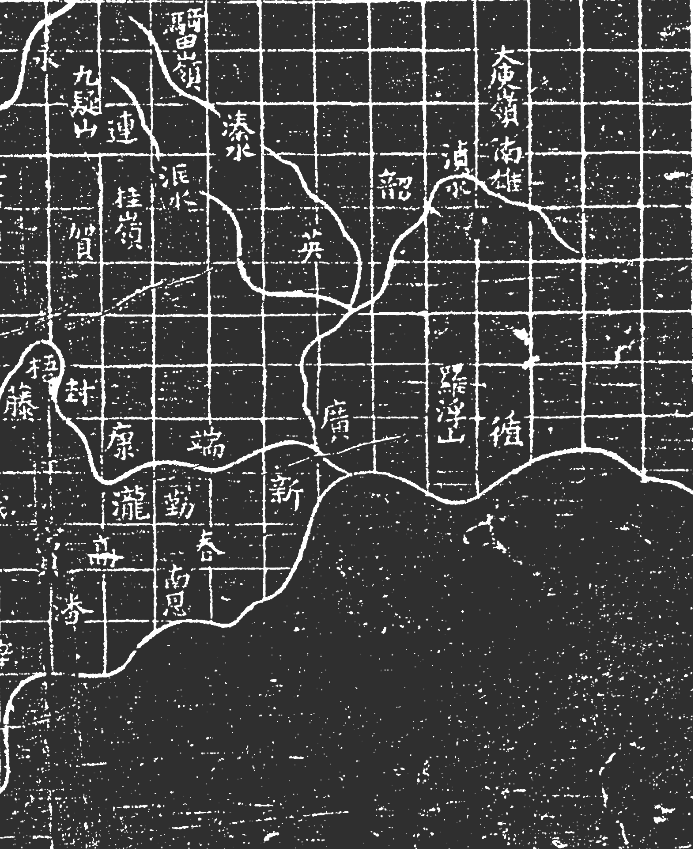|
Yangchun
Yangchun, alternately romanized as Yeungchun, (local pronunciation: ">ɛŋ31 ʦʰɐn45/nowiki>) is a county-level city in southwestern Guangdong, China, administered as a part of the prefecture-level city of Yangjiang. Yangchun has an area of and had approximately 1.05 million inhabitants in 2003. History Under the Qing, made up part of the commandery of Zhaoqing Zhaoqing ( zh, c=肇庆), alternately romanized as Shiuhing, is a prefecture-level city in Guangdong Province, China. As of the 2020 census, its population was 4,113,594, with 1,553,109 living in the built-up (or metro) area made of Duanz .... Administrative divisions Yangchun is divided into the urban quarter Chuncheng () and fifteen towns (). The municipalities are: * 河塱镇 Helang Town * 松柏镇 Songbai Town * 石望镇 Shiwang Town * 春湾镇 Chunwan Town * 合水镇 Heshui Town * 陂面镇 Baimian Town * 圭岗镇 Kyu Kong Town * 永宁镇 Yongning Town * 马水镇 Mashui Town * 岗美镇 ... [...More Info...] [...Related Items...] OR: [Wikipedia] [Google] [Baidu] |
Yongning, Yangchun
Yongning () is a town in western Guangdong province, China, under the administration of the county-level city of Yangchun Yangchun, alternately romanized as Yeungchun, (local pronunciation: ">ɛŋ31 ʦʰɐn45/nowiki>) is a county-level city in southwestern Guangdong, China, administered as a part of the prefecture-level city of Yangjiang. Yangchun has an area .... , it has one residential community and 24 villages under its administration. Notes Township-level divisions of Guangdong Yangchun {{Guangdong-geo-stub ... [...More Info...] [...Related Items...] OR: [Wikipedia] [Google] [Baidu] |
Yangjiang
Yangjiang (), alternately romanized via Cantonese as Yeungkong, is a prefecture-level city in southwestern Guangdong Province in the People's Republic of China. It borders Maoming to the west, Yunfu to the north, Jiangmen to the east, and looks out to the South China Sea to the south. The local dialect is the Gaoyang dialect, a branch of Yue Chinese. During the 2020 census, its population was 2,602,959 inhabitants of whom 1,292,987 lived in the built-up (''or metro'') and largely urbanized area comprising Jiangcheng District and Yangdong County. History Under the Qing, made up part of the commandery of Zhaoqing. It was later split off as a separate prefecture in its own right. Administration The prefecture-level city of Yangjiang administers 4 county-level divisions, including 2 districts, 1 county-level city and 1 counties. Yangjiang is located about from Guangzhou, about 2.5 hours by bus. Notable areas include Zhapo Beach and Hailing Island near Shapa Town. Econ ... [...More Info...] [...Related Items...] OR: [Wikipedia] [Google] [Baidu] |
County-level City
A county-level city () is a County-level divisions of China, county-level administrative division of the China, People's Republic of China. County-level cities have judiciary, judicial but no legislature, legislative rights over their own local ordinance, local law and are usually governed by Administrative divisions of China#Prefectural level (2nd), prefecture-level divisions, but a few are governed directly by Administrative divisions of China#Provincial level (1st), province-level divisions. A county-level city is a "city" () and "county" () that have been merged into one unified jurisdiction. As such, it is simultaneously a city, which is a municipal entity, and a county, which is an administrative division of a prefecture. Most county-level cities were created in the 1980s and 1990s by replacing denser populated Counties of China, counties. County-level cities are not "city, cities" in the strictest sense of the word, since they usually contain rural areas many times the size ... [...More Info...] [...Related Items...] OR: [Wikipedia] [Google] [Baidu] |
Guangdong
) means "wide" or "vast", and has been associated with the region since the creation of Guang Prefecture in AD 226. The name "''Guang''" ultimately came from Guangxin ( zh, labels=no, first=t, t= , s=广信), an outpost established in Han dynasty near modern Wuzhou, whose name is a reference to an order by Emperor Wu of Han to "widely bestow favors and sow trust". Together, Guangdong and Guangxi are called ''Liangguang, Loeng gwong'' ( zh, labels=no, first=t, t=兩廣, s=两广 , p=liǎng guǎng) During the Song dynasty, the Two Guangs were formally separated as ''Guǎngnán Dōnglù'' ( zh, first=t, t=廣南東路, s=广南东路, l=East Circuit (administrative division), Circuit in Southern Guang , labels=no) and ''Guǎngnán Xīlù'' ( zh, first=t, t=廣南西路, s=广南西路, l=West Circuit (administrative division), Circuit in Southern Guang , labels=no), which became abbreviated as ''Guǎngdōng Lù'' ( zh, first=t, t=廣東路, s=广东路 , labels=no) and ''Guǎngxī Lù ... [...More Info...] [...Related Items...] OR: [Wikipedia] [Google] [Baidu] |
Zhaoqing
Zhaoqing ( zh, c=肇庆), alternately romanized as Shiuhing, is a prefecture-level city in Guangdong Province, China. As of the 2020 census, its population was 4,113,594, with 1,553,109 living in the built-up (or metro) area made of Duanzhou, Dinghu and Gaoyao. The prefectural seat—except the Seven Star Crags—is fairly flat, but thickly forested mountains lie just outside its limits. Numerous rice paddies and aquaculture ponds are found on the outskirts of the city. Sihui and the southern districts of the prefecture are considered part of the Pearl River Delta. Formerly one of the most important cities in southern China, Zhaoqing lost its importance during the Qing dynasty and is now primarily known for tourism and as a provincial "college town". Residents from Guangzhou, Shenzhen, and the other cities of the Pearl River Delta often visit it for weekend excursions. It is also a growing manufacturing center. Name Zhaoqing was known to the Qin as Sihui(四会) ... [...More Info...] [...Related Items...] OR: [Wikipedia] [Google] [Baidu] |
Sub-prefecture-level City
A sub-prefectural municipality (), sub-prefectural city, or vice-prefectural municipality, is an unofficial designation for a type of administrative division of China. A sub-prefectural city is officially considered to be a county-level city, but it has more power ''de facto'' because the cadres assigned to its government are one half-level higher in rank than those of an "ordinary" county-level city—though still lower than those of a prefecture-level city. While county-level cities are under the administrative jurisdiction of prefecture-level divisions, sub-prefectural cities are often (but not always) administered directly by the provincial government, with no intervening prefecture level administration. Examples of sub-prefectural cities that does not belong to any prefecture: Jiyuan (Henan Province), Xiantao, Qianjiang and Tianmen (Hubei), Shihezi, Tumxuk, Aral, and Wujiaqu (Xinjiang). Examples of sub-prefectural cities that nevertheless belong to a prefecture: Gol ... [...More Info...] [...Related Items...] OR: [Wikipedia] [Google] [Baidu] |
China Meteorological Administration
The China Meteorological Administration (CMA) is the national weather service of the People's Republic of China. The institution is located in Beijing. History The agency was originally established in December 1949 as the Central Military Commission Meteorological Bureau. It replaced the Central Weather Bureau formed in 1941. In 1994, the CMA was transformed from a subordinate governmental body into one of the public service agencies under the State Council.CMA.gov history Meteorological bureaus are established in 31 provinces, autonomous regions and [...More Info...] [...Related Items...] OR: [Wikipedia] [Google] [Baidu] |
Pearl River Yujitu
A pearl is a hard, glistening object produced within the soft tissue (specifically the mantle) of a living shelled mollusk or another animal, such as fossil conulariids. Just like the shell of a mollusk, a pearl is composed of calcium carbonate (mainly aragonite or a mixture of aragonite and calcite) in minute crystalline form, which has deposited in concentric layers. More commercially valuable pearls are perfectly round and smooth, but many other shapes, known as baroque pearls, can occur. The finest quality of natural pearls have been highly valued as gemstones and objects of beauty for many centuries. Because of this, ''pearl'' has become a metaphor for something rare, fine, admirable, and valuable. The most valuable pearls occur spontaneously in the wild but are extremely rare. These wild pearls are referred to as ''natural'' pearls. ''Cultured'' or ''farmed'' pearls from pearl oysters and freshwater mussels make up the majority of those currently sold. Imitation pearl ... [...More Info...] [...Related Items...] OR: [Wikipedia] [Google] [Baidu] |
Fu (administrative Division)
Fu () is a traditional administrative division of Chinese origin used in the East Asian cultural sphere, translated variously as commandery, prefecture, urban prefecture, or city. They were first instituted as a regular form of administrative division of China's Tang Empire, but were later adopted in Vietnam, Japan and Korea. At present, only two ''fu'' still remain: the prefectures of Kyoto and Osaka in Japan. The term ''fu'' is currently also used in Chinese to translate the provinces of Thailand, but not those of mainland China, Taiwan or other countries. Meaning ''Fu'' (府) means an office or a command institution. The character appears in the Chinese words for "government" (政府, ''zhėngfǔ'') or "official's residence" (府邸, ''fǔdǐ''), and names of official institutions such as the " Imperial Household Department" (內務府, ''Nèiwùfǔ'') in China or " Office of the President" (總統府, ''Zǒngtǒngfǔ'') in Taiwan. The Japanese language uses the Chinese ... [...More Info...] [...Related Items...] OR: [Wikipedia] [Google] [Baidu] |
Qing Dynasty
The Qing dynasty ( ), officially the Great Qing, was a Manchu-led Dynasties of China, imperial dynasty of China and an early modern empire in East Asia. The last imperial dynasty in Chinese history, the Qing dynasty was preceded by the Ming dynasty and succeeded by the Republic of China (1912–1949), Republic of China. At its height of power, the empire stretched from the Sea of Japan in the east to the Pamir Mountains in the west, and from the Mongolian Plateau in the north to the South China Sea in the south. Originally emerging from the Later Jin (1616–1636), Later Jin dynasty founded in 1616 and proclaimed in Shenyang in 1636, the dynasty seized control of the Ming capital Beijing and North China in 1644, traditionally considered the start of the dynasty's rule. The dynasty lasted until the Xinhai Revolution of October 1911 led to the abdication of the last emperor in February 1912. The multi-ethnic Qing dynasty Legacy of the Qing dynasty, assembled the territoria ... [...More Info...] [...Related Items...] OR: [Wikipedia] [Google] [Baidu] |




